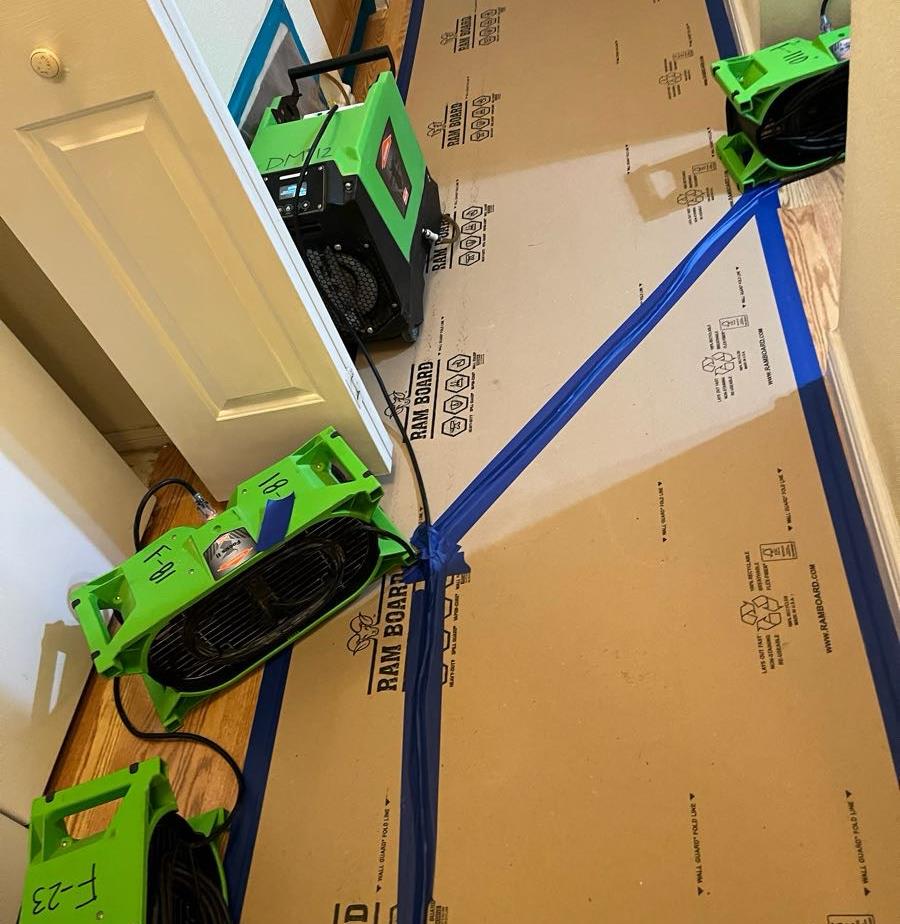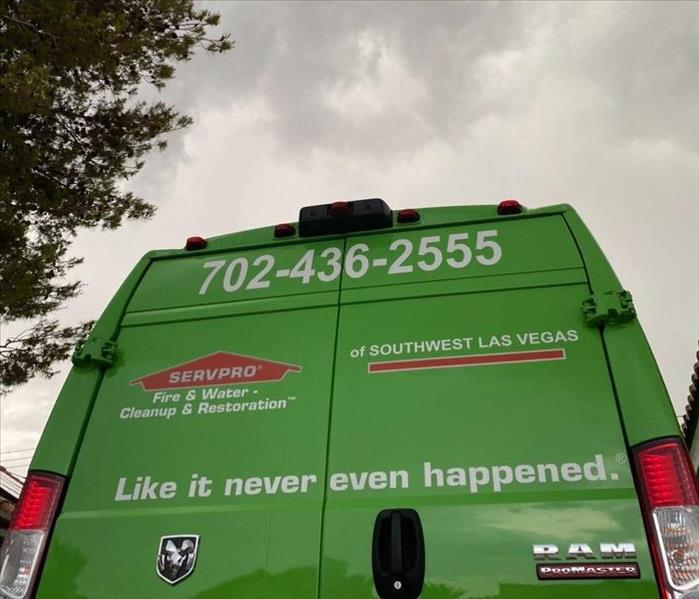Recent Posts
Recovering from a Natural Disaster: The Path to Restoration
3/12/2025 (Permalink)
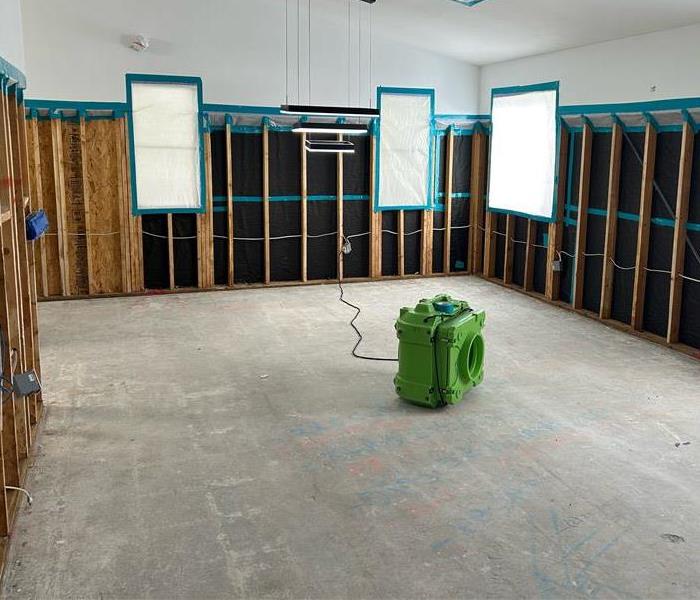 Whether it’s a flood, fire, hurricane, or tornado, the damage to homes and businesses can be extensive.
Whether it’s a flood, fire, hurricane, or tornado, the damage to homes and businesses can be extensive.
When a natural disaster strikes in Las Vegas, the aftermath can feel overwhelming. Whether it’s a flood, fire, hurricane, or tornado, the damage to homes and businesses can be extensive. The path to restoration may seem daunting, but with the right steps and professional assistance, recovery is possible. At SERVPRO®, we specialize in helping property owners navigate this difficult time with expert restoration services.
Understanding the Path to Restoration
Restoring your property after a natural disaster is a multi-step process that requires careful planning and execution. Here’s what to expect:
1. Emergency Response & Safety Assessment
The priority after a disaster is safety. Before entering a damaged structure, ensure it has been deemed safe by authorities. Professional restoration teams, like SERVPRO, arrive promptly to assess the damage and mitigate immediate risks such as structural instability or electrical hazards.
2. Damage Assessment & Documentation
A thorough evaluation of the damage is crucial for insurance claims and restoration planning. Experts document everything, including:
- Structural damage (walls, roof, foundation)
- Water damage and moisture levels
- Fire and smoke residue
- Debris and contamination
3. Mitigation and Preventing Further Damage
Before full restoration begins, mitigation efforts take place to prevent further deterioration. This may include:
- Board-up services to protect against weather and unauthorized entry
- Water extraction and drying to prevent mold growth
- Debris removal and site stabilization
4. Cleanup and Restoration
This phase involves deep cleaning and repair. SERVPRO utilizes industry-leading equipment and techniques to restore homes and businesses efficiently. This process includes:
- Drying and dehumidifying water-damaged areas
- Smoke and soot removal from fire damage
- Professional cleaning and sanitization
- Structural repairs and reconstruction
5. Rebuilding and Final Touches
The final step in the recovery process is rebuilding damaged areas. From drywall replacement to flooring installation, restoration professionals ensure your property is returned to its pre-disaster condition.
Frequently Asked Questions (FAQs)
How long does the restoration process take?
The timeline varies depending on the severity of the damage. Minor damage may take a few days to a week, while extensive repairs could take several months.
Will my insurance cover the restoration costs?
Most homeowners' insurance policies cover natural disaster damage, but coverage details vary. It’s important to document the damage thoroughly and work with restoration professionals experienced in handling insurance claims.
What should I do immediately after a disaster?
- Ensure personal safety and evacuate if necessary.
- Contact emergency services if needed.
- Document damage with photos and videos.
- Notify your insurance provider.
- Call a professional restoration company like SERVPRO for immediate assistance.
Can I start cleaning up myself?
While minor cleanup efforts like removing debris are fine, it’s best to leave major restoration tasks to professionals. Improper handling of water damage, soot, or structural issues can lead to long-term problems.
Why choose SERVPRO for disaster recovery?
SERVPRO has decades of experience in disaster restoration, offering 24/7 emergency services, advanced restoration techniques, and seamless coordination with insurance companies to make recovery as stress-free as possible.
Moving Forward with Confidence
Recovering from a natural disaster is a challenging process, but with the right support, it’s possible to restore your property and regain a sense of normalcy. By following a structured restoration plan and relying on expert services like SERVPRO, you can navigate the path to recovery with confidence.
If you or someone you know has experienced property damage from a natural disaster, don’t wait. Contact SERVPRO today to begin the restoration process.
What to Do If You Experience Electrical Fires in Your Home
12/11/2024 (Permalink)
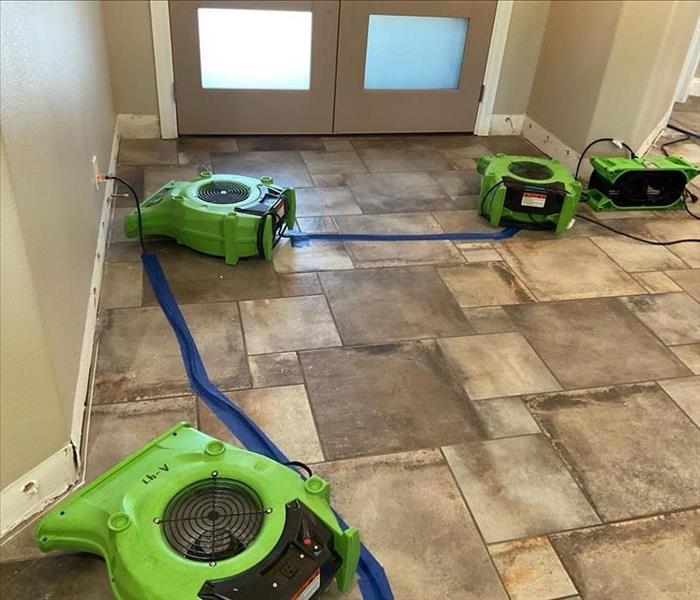 Knowing what to do if an electrical fire breaks out in your home can help minimize damage and keep everyone safe.
Knowing what to do if an electrical fire breaks out in your home can help minimize damage and keep everyone safe.
Electrical fires are a serious hazard and can happen without warning. Each year in the U.S., electrical failures or malfunctions cause around 51,000 fires, according to the Electrical Safety Foundation International (ESFI). Knowing what to do if an electrical fire breaks out in your home can help minimize damage and keep everyone safe. Our team is here to provide some key tips on handling an electrical fire.
Signs of an Electrical Fire
First, it's important to recognize the signs of an electrical fire. Common indicators include:
- Sparks or strange popping noises from outlets or appliances
- A burning smell, especially a plastic-like odor
- Smoke or heat coming from outlets, cords, or appliances
- Flickering lights, even after changing the bulb
If you notice any of these, it's time to take action.
Step 1: Cut the Power
The first thing you should do is cut the power—if it’s safe to do so. Electrical fires are fueled by live electricity, so turning off the power can help stop the fire from spreading.
- Locate your breaker box: Know where your home's main circuit breaker is.
- Turn off the power: If you can, shut off the specific circuit where the fire started, or turn off the main breaker to cut power to the whole house.
Step 2: Use the Right Fire Extinguisher
Electrical fires are Class C fires, meaning they require a fire extinguisher designed for electrical equipment. Never use water to try to put out an electrical fire, as it can cause electrocution.
- Have a Class C fire extinguisher on hand: Keep one in areas like the kitchen or near high-traffic areas.
- Aim at the source: Use the extinguisher to target the base of the flames if the fire is small and manageable.
Step 3: Evacuate and Call 911
If the fire is spreading or you can't safely cut the power, your priority is to get everyone out of the house.
- Evacuate immediately: Don’t wait to see if the fire gets worse—smoke and flames can spread fast.
- Call emergency services: Once you're safely outside, call 911 to report the fire.
Step 4: Notify Your Utility Company
Once the fire is out, contact your local utility company. They may need to inspect your home’s electrical system before the power can be safely restored.
How to Prevent Electrical Fires
Prevention is always better than dealing with the aftermath. Here are some tips to reduce the risk of electrical fires in your home:
- Inspect your wiring: Have an electrician check your home's wiring, especially in older homes.
- Avoid overloading outlets: Plugging too many devices into a single outlet can cause overheating.
- Use high-quality power strips: Avoid cheap power strips, and never chain them together.
- Watch for warning signs: If you notice frequent circuit breaker trips, flickering lights, or a burning smell, call an electrician immediately.
Electrical fires can be dangerous, but knowing what to do can make all the difference. If an electrical fire breaks out, remember to cut the power if possible, use the right fire extinguisher, evacuate, and call for help. After the fire is out, SERVPRO of Southwest Las Vegas can help restore your home and get everything back to normal.
Crawl Space Mold: How to Prevent and Remove It
11/10/2024 (Permalink)
Mold growing in crawl spaces is something many homeowners don’t notice until it’s too late. These areas are often damp and poorly ventilated, creating the perfect environment for mold to grow. If not addressed, mold in your crawl space can spread and cause damage. SERVPRO of Southwest Las Vegas is here to share expert tips on how to prevent mold from forming and what to do if you already have it.
Signs of Mold in Your Crawl Space
There are some clear signs that mold might be hiding down there:
- A musty or unpleasant odor coming from below
- Visible mold or discoloration on floor joists, walls, or insulation
- Wood that appears stained or damp
- Extra moisture in the air or visible water in the space
If you notice any of these signs, it's time to take action.
How to Prevent Mold in Crawl Spaces
Preventing mold is always easier than getting rid of it. Here are some steps to keep mold from forming in your crawl space:
- Control Moisture: Moisture control is the most important step in preventing mold growth.
- Install a vapor barrier: A vapor barrier, made of plastic or foil, can help keep ground moisture from rising into the crawl space.
- Fix leaks quickly: Check for any leaking pipes or cracks in the foundation and repair them immediately to avoid water build-up.
- Redirect water: Make sure your gutters and downspouts direct water away from your foundation to keep your crawl space dry.
- Increase Ventilation: Good airflow helps dry out moisture in crawl spaces. Consider installing a ventilation system or fans to keep air moving. Also, make sure crawl space vents are clear of debris, allowing air to circulate.
- Regular Inspections: Inspect your crawl space regularly, at least once a year. Look for any signs of dampness or mold. By catching problems early, you can prevent bigger issues later on.
How to Remove Mold from Crawl Spaces
If you find mold in your crawl space, you’ll need to act fast to stop it from spreading. Here’s how to address the problem:
1. Contain the Area: Before starting cleanup, seal off the affected area. Use plastic sheeting to cover vents or openings to keep mold spores from spreading to other areas of your home.
2. Remove Mold-Damaged Materials: Any materials that are too moldy to clean, like insulation or drywall, should be removed and disposed of. Be sure to wear protective gear such as gloves, goggles, and a mask.
3. Clean Moldy Surfaces: Scrub affected surfaces using a cleaning solution designed to kill mold. A mixture of water and detergent works well for most non-porous surfaces like concrete or wood. For tougher cases, you may want to use a mold-killing cleaner.
4. Use a Dehumidifier: After cleaning, use a dehumidifier to dry out the crawl space and lower humidity levels. Mold thrives in moist conditions, so keeping the space dry will prevent mold from coming back. It’s recommended to keep humidity below 50%.
When to Call SERVPRO®
If you discover a significant mold problem in your crawl space, it’s best to call in the professionals. SERVPRO of Southwest Las Vegas has the right equipment and expertise to safely remove mold and make sure it doesn’t come back. We use advanced techniques to clean and remediate the area, restoring your home to a mold-free state.
Protecting Yourself During Water Damage Cleanup: Essential Safety Tips
9/23/2024 (Permalink)
Water damage can occur suddenly and unexpectedly, leaving homeowners and business owners with a significant cleanup task. Whether it’s due to a burst pipe, flooding, or severe storm, addressing water damage quickly is crucial to prevent further damage to your property. However, safety should always be a top priority when dealing with water damage cleanup. Taking the proper precautions can help protect you and others from potential hazards.
In this blog, we’ll explore essential safety tips for protecting yourself during water damage cleanup and how SERVPRO of Southwest Las Vegas can assist with professional water damage restoration.
Assess the Situation Before Entering
Before you begin any cleanup efforts, it’s important to assess the extent of the water damage and identify any immediate safety risks. Entering a water-damaged area without evaluating the situation can expose you to hazards such as:
- Electrical Risks: Water and electricity are a dangerous combination. If water has entered areas with electrical wiring or outlets, there is a risk of electric shock. Ensure that the electricity in the affected area is turned off before entering.
- Structural Damage: Prolonged exposure to water can weaken the structure of your property, including floors, walls, and ceilings. Look for signs of structural damage, such as sagging ceilings or buckling floors, before walking through the area.
- Contaminated Water: Depending on the source of the water, it may be contaminated with harmful bacteria, chemicals, or sewage. Never assume that standing water is clean—always take precautions to protect yourself from exposure.
Be Aware of Mold Growth
Mold can begin to grow within 24 to 48 hours of water exposure, making it a significant concern during water damage cleanup. Mold poses health risks and can spread quickly if not properly addressed. If you notice mold growth, avoid disturbing it, as this can release mold spores into the air.
Here’s how to protect yourself from mold during cleanup:
- Wear a Respirator: As mentioned earlier, a respirator or mask with a particulate filter is essential when working in areas with mold.
- Isolate the Area: If possible, isolate the moldy area to prevent the spread of spores to other parts of your home or business.
- Call a Professional: Mold removal should be handled by professionals, like the experts at SERVPRO®, to ensure proper remediation. SERVPRO’s team is equipped to safely remove mold and prevent further growth.
Ensure Proper Ventilation
Water damage often leads to increased humidity levels, which can create an environment conducive to mold growth and musty odors. Proper ventilation is crucial to help reduce moisture and improve air quality during cleanup. Here are a few tips to ensure adequate ventilation:
- Open Windows and Doors: If weather permits, open windows and doors to allow fresh air to circulate throughout the affected area.
- Use Fans and Dehumidifiers: Fans and dehumidifiers can help speed up the drying process by removing excess moisture from the air.
Know When to Call Professionals
While DIY cleanup efforts may be appropriate for minor water damage, significant water damage situations require professional assistance. SERVPRO specializes in water damage restoration and has the experience, equipment, and expertise to handle even the most severe cases.
By calling SERVPRO, you can ensure:
- Comprehensive Assessment: SERVPRO’s team will thoroughly assess the extent of the water damage, including hidden damage in walls, floors, and ceilings.
- Safe and Efficient Water Removal: SERVPRO uses industrial-grade equipment for water extraction and drying, ensuring that your property is properly dried and restored.
- Mold Remediation: If mold is present, SERVPRO’s certified professionals can safely remove it and treat affected areas to prevent further growth.
- Restoration of Damaged Materials: From repairing water-damaged drywall to replacing damaged flooring, SERVPRO handles all aspects of the restoration process.
For larger water damage situations, it’s important to seek the help of professionals like SERVPRO. With 24/7 emergency service and a team of experienced technicians, SERVPRO ensures that your property is restored safely and efficiently. Whether it's water extraction, mold remediation, or structural repairs, SERVPRO has the expertise to handle it all.
If you’re dealing with water damage, don’t hesitate to contact SERVPRO for fast and professional restoration services.
How Different Water Damage Categories Affect Mold Growth
9/11/2024 (Permalink)
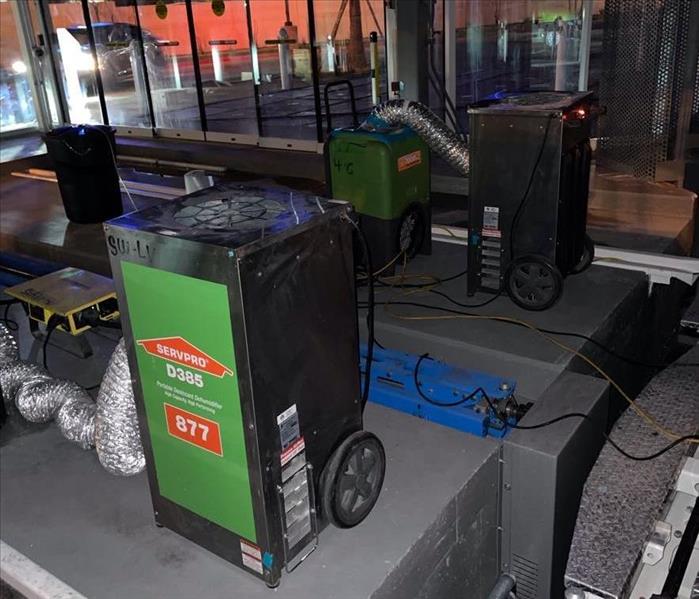 If you experience water & mold damage, contact SERVPRO of Southwest Las Vegas for professional and prompt mitigation services.
If you experience water & mold damage, contact SERVPRO of Southwest Las Vegas for professional and prompt mitigation services.
In Las Vegas, NV, dealing with water damage after storms or plumbing issues is a common challenge. It’s crucial to understand the different categories of water damage and how they impact mold growth to manage the situation effectively. Here's a detailed guide to help you navigate through this issue.
What Are the Categories of Water Damage?
Water damage is classified into three categories based on the source of water and its contamination level. Knowing these categories helps in taking the right actions to mitigate damage and prevent mold growth.
Category 1: Clean Water
Clean water comes from a sanitary source and poses no immediate health risks. This includes water from broken pipes, overflowing sinks, or rainwater. Although it is safe initially, it can become a breeding ground for mold if not addressed quickly.
Category 2: Gray Water
Gray water is slightly contaminated water from sources like washing machines, dishwashers, or toilet overflow (containing urine but no feces). This water contains microorganisms and can cause illness if ingested. It accelerates mold growth due to the organic material present.
Category 3: Black Water
Black water is highly contaminated and includes sewage, floodwater from rivers or streams, and water containing fecal matter. This category poses serious risk and requires immediate professional remediation due to the high level of contaminants.
How Each Category Impacts Mold Growth
Understanding the impact of each water damage category on mold growth is essential for effective remediation.
Category 1: Clean Water
Even though clean water is safe initially, mold can begin to grow within 24-48 hours after water damage occurs according to the Environmental Protection Agency (EPA). Mold spores thrive in damp environments, so it's crucial to dry the area promptly to prevent mold growth.
Category 2: Gray Water
Gray water promotes mold growth more rapidly due to its contamination level. The organic material in gray water provides nutrients for mold, making it easier for spores to spread. Quick cleanup and drying are vital to prevent extensive mold contamination.
Category 3: Black Water
Black water creates the highest risk for mold growth. The contaminants and organic materials present provide an ideal environment for mold. Immediate professional intervention is necessary to handle black water safely and effectively, as delaying cleanup can lead to severe mold infestations.
Keeping Your Home Safe Post-Water Damage
Understanding the different categories of water damage and their impact on mold growth is crucial for effective remediation. In Las Vegas, NV, being prepared and knowing how to respond to water damage can save you from expensive repairs. If you experience water damage, contact SERVPRO of Southwest Las Vegas for professional and prompt mitigation services.
What is a Fire Break?
8/14/2024 (Permalink)
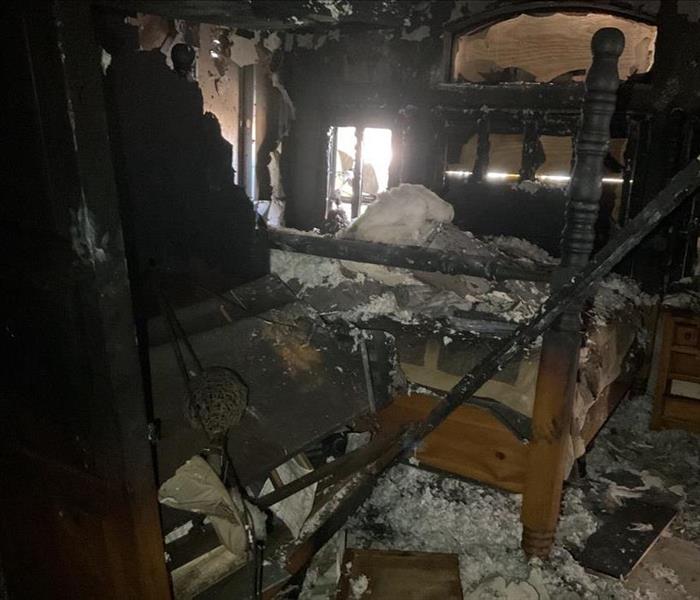 If you need help with fire damage restoration or have questions about fire safety, contact SERVPRO of Southwest Las Vegas.
If you need help with fire damage restoration or have questions about fire safety, contact SERVPRO of Southwest Las Vegas.
Wildfires can cause extensive damage, especially in dry and windy places like Las Vegas, NV. One effective way to prevent the spread of wildfires is by using fire breaks. But what exactly is a fire break, and how does it help control wildfires? This blog will explain what fire breaks are, why they are important, and how they are used.
What is a Fire Break?
A fire break, also known as a fire line or fireguard, is a gap in vegetation or other combustible material that acts as a barrier to slow or stop a wildfire. Fire breaks can be natural or man-made and are strategically placed to control the spread of fire.
Why Are Fire Breaks Important?
The main purpose of a fire break is to provide firefighters with a safer area from which to fight a fire. It also helps to limit the fire's ability to spread, protecting homes, properties, and natural resources.
Types of Fire Breaks
There are different types of fire breaks, each serving the same purpose but created in different ways.
Natural Fire Breaks
Natural fire breaks use existing landscape features that do not support the spread of fire. Examples include rivers, lakes, wetlands, and rocky terrain. These natural features can be very effective in stopping or slowing a fire.
Man-Made Fire Breaks
Man-made fire breaks are constructed by removing vegetation and other combustible materials to create a clear strip of land. These can include roads, trails, or specially cleared areas around properties.
How to Create a Fire Break
Creating a fire break involves careful planning and regular maintenance to ensure effectiveness.
Planning
First, identify high-risk areas and plan where the fire break will be most effective. Consider the terrain, prevailing winds, and the location of valuable assets such as homes and infrastructure.
Clearing Vegetation
Remove trees, brush, grass, and other combustible materials from the area where you plan to create the fire break. This clear strip of land will help stop the fire from spreading.
Maintaining the Fire Break
Regularly clear the fire break of any new vegetation growth to ensure it remains effective. This is an ongoing process that requires regular attention.
Controlled Burns
In some cases, controlled burns (also known as prescribed burns) are used to create fire breaks. This involves deliberately setting controlled fires to burn away vegetation in a designated area. According to the National Interagency Fire Center, controlled burns are a crucial tool in wildfire management and can significantly reduce the fuel available for wildfires.
Benefits of Fire Breaks
Fire breaks offer multiple benefits, making them a vital part of wildfire management.
Protecting Homes and Properties
For homeowners in Las Vegas, NV, creating fire breaks around their properties can be a critical measure in protecting their homes from wildfires. This is especially important in areas near wildlands where the risk of fire is higher.
Helping Firefighters
Fire breaks provide firefighters with safer and more effective positions to battle wildfires. By slowing the fire's progress, fire breaks give firefighters the opportunity to control and extinguish the fire more efficiently.
Saving Natural Resources
Fire breaks help protect forests, wildlife habitats, and other natural resources from being destroyed by wildfires. By containing the fire, these breaks help preserve the ecological balance and biodiversity of the area.
Final Thoughts
Fire breaks are a vital tool in managing wildfires. For residents of Las Vegas, NV, understanding and using fire breaks can be a crucial part of wildfire preparedness. Whether using natural features or creating man-made breaks, these barriers can protect homes, support firefighting efforts, and save natural resources. If you need help with fire damage restoration or have questions about fire safety, contact SERVPRO of Southwest Las Vegas. Our team is here to help you stay safe and prepared!
Mold in New Construction: Prevention and Early Intervention
7/10/2024 (Permalink)
New construction projects represent the promise of fresh beginnings, innovative designs, and modern living spaces. However, even in newly built structures, the threat of mold contamination looms large if proper precautions are not taken during the construction process. Mold growth in new construction can occur due to various factors, including moisture intrusion, inadequate ventilation, and poor construction practices. Preventing mold in new construction and implementing early intervention measures are crucial for safeguarding the integrity of the building and ensuring the health and safety of occupants. In this blog, we'll delve into the importance of addressing mold in new construction and discuss strategies for prevention and early intervention.
Recognizing the Risks of Mold in New Construction
Mold growth in new construction poses numerous risks, including:
- Structural Damage: Mold can compromise the integrity of building materials, leading to deterioration, staining, and weakening of structural components such as wood, drywall, and insulation.
- Financial Losses: Addressing mold contamination in new construction can be costly and time-consuming, potentially leading to delays, disputes, and additional expenses for property owners, builders, and contractors.
Strategies for Mold Prevention in New Construction
Preventing mold in new construction requires a proactive approach that addresses potential sources of moisture and creates a hostile environment for mold growth. Some key strategies for mold prevention in new construction include:
- Proper Site Preparation: Begin by ensuring proper site preparation, including grading, drainage, and waterproofing measures to prevent water intrusion into the building's foundation and basement areas.
- Moisture Management: Implement moisture management strategies during construction, such as using moisture-resistant building materials, installing vapor barriers, and sealing gaps and openings to prevent moisture infiltration.
- Effective Ventilation: Design and install effective ventilation systems to promote airflow and reduce humidity levels within the building. Proper ventilation helps prevent moisture buildup and creates a healthy indoor environment for occupants.
- Quality Construction Practices: Adhere to high-quality construction practices, including proper installation of roofing, siding, windows, and doors to prevent water leaks and moisture penetration into the building envelope.
- Regular Inspections: Conduct regular inspections throughout the construction process to identify potential sources of moisture, water leaks, and construction defects that could contribute to mold growth.
Early Intervention and Remediation
Despite best efforts to prevent mold in new construction, unforeseen issues may arise during the construction process or after occupancy. Early intervention and remediation are essential for addressing mold contamination promptly and effectively. Some key steps for early intervention and remediation include:
- Identification of Mold: Conduct thorough inspections to identify signs of mold growth, including visible mold, musty odors, and moisture stains on building materials.
- Moisture Mitigation: Address sources of moisture promptly to prevent further mold growth. This may involve repairing water leaks, improving ventilation, and implementing moisture control measures.
- Professional Remediation: Engage certified mold remediation specialists to conduct comprehensive mold inspections, remediate contamination, and implement preventive measures to prevent recurrence.
- Documentation: Keep detailed records of mold remediation efforts, including inspection reports, remediation plans, and documentation of cleanup and restoration activities.
Preventing mold in new construction requires a proactive approach that addresses potential sources of moisture, implements effective ventilation systems, and adheres to high-quality construction practices. In cases of mold contamination, early intervention and remediation are essential for mitigating risks and restoring a healthy indoor environment. By prioritizing mold prevention and early intervention measures, builders, contractors, and property owners can ensure the long-term sustainability and safety of new construction projects. Give SERVPRO of Southwest Las Vegas a call for your mold remediation cleanup services.
Choosing the Right Restoration Company for Your Needs
6/19/2024 (Permalink)
When disaster strikes, whether it's a burst pipe, fire, or mold infestation, the aftermath can be overwhelming. Amidst the chaos and stress, finding the right restoration company to help you navigate through the restoration process is crucial. With numerous options available, how do you choose the one that's right for you? At SERVPRO®, we understand the importance of selecting a trusted partner to restore your property swiftly and effectively. Here are some key factors to consider when choosing the right restoration company for your needs.
- Experience and Expertise: Look for a restoration company with a proven track record of experience and expertise in handling a variety of restoration projects. SERVPRO has been in the industry for decades, providing top-notch restoration services backed by industry-leading training and certifications.
- 24/7 Availability: Emergencies don't wait for convenient hours, so neither should your restoration company. Ensure the company you choose offers 24/7 emergency services, so you can get the help you need when you need it most. SERVPRO is always ready to respond to emergencies promptly, day or night.
- Comprehensive Services: From water damage restoration to mold remediation and fire damage cleanup, the right restoration company should offer a wide range of services to address your specific needs. At SERVPRO, we offer comprehensive restoration solutions tailored to your unique situation, ensuring thorough cleanup and restoration from start to finish.
- Advanced Equipment and Techniques: Technology plays a crucial role in the restoration process. Choose a company that utilizes advanced equipment and techniques to ensure efficient and effective restoration. SERVPRO invests in state-of-the-art equipment and stays abreast of the latest industry advancements to deliver superior results every time.
- Licensed and Insured: Protect your investment by choosing a restoration company that is licensed, bonded, and insured. This ensures that you're working with a reputable company that will take responsibility for any unforeseen issues that may arise during the restoration process. SERVPRO is fully licensed, bonded, and insured for your peace of mind.
- Customer Reviews and Testimonials: Take the time to research and read customer reviews and testimonials to gauge the reputation and reliability of the restoration company you're considering. Positive feedback and satisfied customers are a testament to the company's commitment to excellence. SERVPRO takes pride in our countless satisfied customers who trust us with their restoration needs time and time again.
Choosing the right restoration company can make all the difference in restoring your property and your peace of mind. By considering these factors and partnering with a trusted restoration leader like SERVPRO, you can rest assured that your property is in capable hands. Contact us today to learn more about our comprehensive restoration services and how we can help you restore your property to preloss condition quickly and efficiently.
Preventing Basement Flooding in Storm-Prone Areas
5/15/2024 (Permalink)
As storm season approaches, homeowners in storm-prone areas brace themselves for potential flooding, especially in vulnerable areas like basements. Basement flooding can lead to costly damages and major headaches, but with proactive measures, you can significantly reduce the risk of water intrusion. At SERVPRO®, we understand the importance of safeguarding your property, which is why we're here to share some essential tips for preventing basement flooding in storm-prone regions.
- Maintain Your Gutters and Downspouts: Properly functioning gutters and downspouts are your first line of defense against basement flooding. Make sure they are clear of debris, such as leaves and twigs, to allow water to flow freely away from your home's foundation.
- Direct Water Away from Your Home: Ensure that the grading around your home slopes away from the foundation. This helps divert rainwater and storm runoff away from your basement. Additionally, consider installing downspout extensions to carry water farther from your home's foundation.
- Seal Foundation Cracks: Inspect your basement walls and foundation for any cracks or gaps where water could seep in. Seal these areas with waterproofing sealant or epoxy to prevent water intrusion during heavy storms.
- Install a Sump Pump: A sump pump is a valuable investment for storm-prone areas. It collects excess water from the sump pit and pumps it away from your home, preventing water buildup in the basement. Ensure your sump pump is in good working condition and consider installing a backup battery-powered pump for added protection during power outages.
- Invest in Basement Waterproofing: Consider professional basement waterproofing services to fortify your basement against potential flooding. This may include installing a waterproof membrane, interior drainage system, or exterior waterproofing barrier to keep water out.
- Inspect and Maintain Plumbing Systems: Leaky pipes and plumbing fixtures can contribute to basement flooding. Inspect your plumbing regularly for any signs of leaks or water damage, and promptly repair any issues to prevent them from worsening during storms.
- Elevate Vulnerable Items: Store valuable items and important documents in waterproof containers and elevate them off the basement floor. This can help protect your belongings in the event of minor flooding.
By implementing these proactive measures, you can minimize the risk of basement flooding and protect your home and belongings from water damage during storm season. However, if despite your best efforts, your basement does experience flooding, don't hesitate to contact SERVPRO for professional water damage restoration services. Our trained technicians are available 24/7 to help you get your home back to pre-flood condition swiftly and efficiently.
Stay dry, stay safe, and stay prepared this storm season with SERVPRO by your side.
The benefits of 24-hour emergency service for fire damage restoration
4/19/2024 (Permalink)
In the aftermath of a fire, every moment counts. At SERVPRO®, we understand the urgency and stress that fire damage can bring to your life. That's why our 24-hour emergency service for fire damage restoration is not just a convenience; it's a lifeline in your time of need.
Swift Action Mitigates Further Damage
Fires can cause extensive damage to your property, and the longer it takes to address the aftermath, the more profound the impact can be. Our 24-hour emergency service ensures that our skilled technicians are on standby to respond immediately to your call. This swift action is crucial in preventing secondary damage such as mold growth, structural issues, and further deterioration of your belongings.
Protecting Health and Safety
Beyond the visible damage, fires can leave behind hazardous residues and compromised air quality. Our rapid response team is equipped with state-of-the-art tools and protective gear to address these safety concerns promptly. By acting swiftly, we can implement measures to contain and neutralize potential health hazards, ensuring the well-being of you and your loved ones.
Minimizing Restoration Costs
The longer fire damage is left unattended, the more expensive the restoration process becomes. Rapid response not only limits the extent of the damage but also helps in salvaging items that might otherwise be irreparable. By mitigating the severity of the situation early on, we can save you both time and money in the long run.
Comprehensive Assessment and Planning
Our 24-hour emergency service doesn't just stop at immediate action. Once on-site, our experienced technicians conduct a thorough assessment of the damage and create a tailored restoration plan. This proactive approach ensures that every aspect of the restoration process is considered, providing you with a clear roadmap to recovery.
Peace of Mind for Home and Business Owners
Disasters don't wait for convenient hours, and neither should your restoration service. Our around-the-clock availability is designed to give you peace of mind, knowing that help is just a phone call away, no matter the time of day or night.
The benefits of 24-hour emergency service for fire damage restoration extend far beyond mere convenience. It's about swift, comprehensive action that protects your property, health, and financial well-being. At SERVPRO, we take pride in being there for you when you need us most, providing not just a service, but a lifeline in times of crisis.
 Whether it’s a flood, fire, hurricane, or tornado, the damage to homes and businesses can be extensive.
Whether it’s a flood, fire, hurricane, or tornado, the damage to homes and businesses can be extensive.






 24/7 Emergency Service
24/7 Emergency Service

